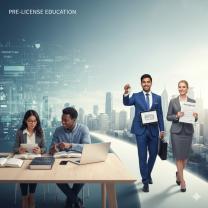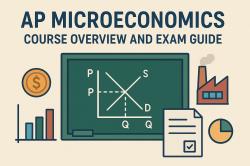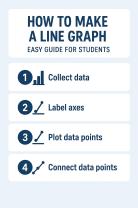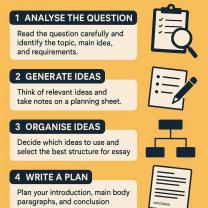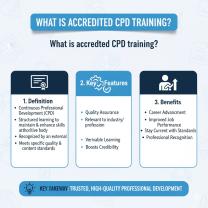How to become a critical reader?
How to Become a Critical Reader: Skills and Strategies
Reading is more than just absorbing words on a page—it’s about engaging with ideas, questioning perspectives, and analyzing arguments. Critical reading helps you not only understand what the author is saying but also evaluate the quality and validity of their claims. Whether you’re a student, professional, or lifelong learner, strengthening your critical reading skills will enhance your ability to think independently and make informed decisions.
What Is Critical Reading?
Critical reading goes beyond surface-level understanding. It involves examining an author’s purpose, recognizing biases, evaluating evidence, and connecting ideas to broader contexts. Instead of passively accepting information, a critical reader actively engages with the text to determine its accuracy, relevance, and significance.
Key Skills for Critical Reading
Active Engagement
Highlight or take notes while reading.
Ask yourself questions: What is the main argument? What evidence supports it?
Identifying Purpose and Audience
Consider why the author wrote the text and who the intended readers are.
This helps uncover potential biases or underlying agendas.
Analyzing Arguments and Evidence
Look at the quality of the reasoning.
Distinguish between facts, opinions, and assumptions.
Evaluate whether the evidence is credible and sufficient.
Recognizing Bias and Perspective
Every author writes from a certain perspective.
Compare the text with other viewpoints to avoid one-sided understanding.
Interpreting Structure and Style
Pay attention to how the text is organized.
Notice the choice of language, tone, and rhetorical techniques.
Connecting to Prior Knowledge
Relate what you read to what you already know.
Make connections to historical events, theories, or current issues.
Asking Probing Questions
What is being left out?
What assumptions is the author making?
How does this align—or conflict—with other information I’ve read?
Strategies to Improve Critical Reading
Preview Before Reading
Skim headings, subheadings, and summaries to get an overview. This primes your mind for deeper analysis.Read Slowly and Deliberately
Avoid rushing. Careful reading allows you to pick up on subtleties in arguments and evidence.Take Notes and Annotate
Jot down key ideas, questions, and your own reactions. Annotation keeps you engaged and makes review easier.Engage in Discussions
Talking about what you’ve read with others can reveal new insights and challenge your interpretations.Practice Comparative Reading
Read multiple sources on the same topic. This will help you spot differences in evidence, reasoning, and perspective.Reflect After Reading
Summarize the main argument in your own words and evaluate its strengths and weaknesses.
Why Critical Reading Matters
In a world full of information, being a critical reader equips you to separate fact from misinformation, evaluate the reliability of sources, and form well-reasoned opinions. It strengthens your academic performance, professional decision-making, and personal growth as an informed citizen.
By practicing these skills and strategies consistently, you can transform from a passive reader into an active, critical thinker who reads with purpose and clarity.
Becoming a critical reader means actively engaging with texts, not just passively absorbing information. It involves analyzing, evaluating, and interpreting content to understand its deeper meaning, identify arguments, and recognize potential biases. This skill is vital not only for academic success but also for navigating the vast amount of information encountered in daily life.
Steps to Become a Critical Reader
Critical reading is a process that develops over time with practice. Here are the fundamental steps:
Preview the Text: Before diving in, skim the text to get an overview. Look at the title, headings, subheadings, introduction, and conclusion. This helps you understand the topic, structure, and author's purpose.
Identify the Author's Purpose and Context: Consider why the author wrote the text. Is it to inform, persuade, entertain, or argue a point? Also, consider the context—who is the author, when was it written, where was it published, and for what audience?
Actively Read and Annotate: Don't just read words; engage with them. Highlight key ideas, underline unfamiliar vocabulary, write questions in the margins, summarize paragraphs, and note down your reactions. This active participation helps you process and remember information.
Analyze the Argument: Identify the author's main argument or thesis statement. What claims are they making? What evidence do they use to support these claims?
Evaluate the Evidence and Reasoning: Assess the quality and sufficiency of the evidence. Is it credible, relevant, and accurate? Does the author use logical reasoning, or are there any fallacies or leaps in logic?
Identify Assumptions and Biases: Every author brings a perspective. Look for underlying assumptions the author makes and any potential biases that might influence their argument.
Formulate Your Own Interpretation/Critique: After thoroughly analyzing the text, develop your own informed opinion. Do you agree with the author's argument? Why or why not? What are the strengths and weaknesses of their presentation?
Techniques for Analyzing and Evaluating Texts
To effectively analyze and evaluate texts, employ these specific techniques:
Question Everything: Adopt a skeptical mindset. Ask "who," "what," "when," "where," "why," and "how" about every aspect of the text.
Summarize and Paraphrase: Being able to summarize the main points in your own words demonstrates understanding. Paraphrasing specific sections helps clarify meaning and identify areas of confusion.
Distinguish Fact from Opinion: Critical readers can tell the difference between objectively verifiable statements (facts) and subjective interpretations or beliefs (opinions).
Trace the Author's Logic: Follow the author's line of reasoning. How do they move from one point to the next? Are their transitions clear and logical?
Look for Rhetorical Devices: Authors often use rhetoric (e.g., metaphors, analogies, emotional appeals, ethos, pathos, logos) to persuade. Identifying these helps you understand how the author is trying to influence you.
Assess Source Credibility: For factual claims, evaluate the reliability of the source. Is the author an expert? Is the publication reputable? Is the information up-to-date?
Consider Counterarguments: A strong argument usually acknowledges and addresses opposing viewpoints. Note whether the author does this fairly or dismisses them.
Identify Gaps or Omissions: What information is not present in the text? Are there alternative perspectives or pieces of evidence that the author overlooked or chose to exclude?
Identifying Arguments and Biases in Reading
A crucial part of critical reading is being able to discern the underlying arguments and biases.
Identifying Arguments:
Thesis Statement: This is the main point or argument the author wants you to accept, often found in the introduction or conclusion.
Main Claims: These are the sub-arguments or reasons the author provides to support their thesis.
Evidence: This includes facts, statistics, examples, anecdotes, expert testimony, and logical reasoning used to substantiate the claims.
Logical Fallacies: Be aware of common errors in reasoning, such as ad hominem attacks, straw man arguments, false dilemmas, or appeals to emotion, which weaken an argument.
Recognizing Biases:
Author's Background/Agenda: Consider the author's profession, political leanings, cultural background, or any vested interests that might shape their perspective.
Publication/Platform Bias: The source where the text is published (e.g., a partisan news outlet, a scientific journal, a corporate blog) can indicate a particular slant.
Selection Bias: Notice if the author selectively chooses evidence that supports their view while ignoring contradictory information.
Wording/Tone: Emotionally charged language, loaded terms, or an overly confident/dismissive tone can signal bias.
Omission Bias: When important information or alternative viewpoints are deliberately left out.
Practicing Critical Reading Through Exercises
Consistent practice is key to honing critical reading skills.
Compare Multiple Sources: Read several articles or essays on the same topic from different publications or authors. Compare their arguments, evidence, and conclusions. Note how their biases might shape their presentation.
Debate a Text: Choose a controversial article and actively debate its points, either with others or by writing down arguments for and against the author's position.
Deconstruct an Argument: Take an editorial or opinion piece and break it down into its core components: thesis, main claims, supporting evidence, and underlying assumptions.
Annotation Practice: Regularly read with a pen or highlighter, focusing on active annotation. Over time, you'll develop your own effective system.
Critique Advertising: Analyze advertisements (print, online, video). What argument are they making? What emotions are they appealing to? What assumptions are they making about the audience?
Read Challenging Texts: Deliberately choose texts that are complex, present unfamiliar ideas, or challenge your own viewpoints. This helps stretch your analytical muscles.
Applying Critical Reading Skills in Daily Life
Critical reading isn't just for academics; it's an essential skill for navigating the modern world.
Evaluating News and Media: In an age of information overload and misinformation, critically reading news articles, social media posts, and online content helps you distinguish credible sources from propaganda or fake news.
Making Informed Decisions: Whether it's choosing a product, voting for a political candidate, or making a health decision, critical reading allows you to evaluate claims, understand underlying motivations, and make more informed choices.
Understanding Arguments: In discussions or debates, being able to critically "read" someone's verbal argument helps you identify their core points, assess their evidence, and respond thoughtfully rather than emotionally.
Personal Growth: Engaging with diverse perspectives and critically evaluating new ideas helps broaden your worldview, challenge your own assumptions, and foster intellectual humility.
Professional Success: In any profession, the ability to analyze reports, understand proposals, evaluate market research, and critique documents is invaluable for making sound judgments and contributing effectively.



